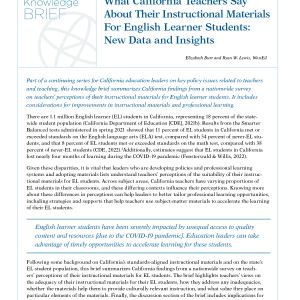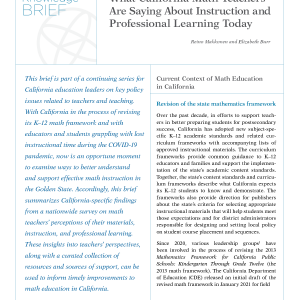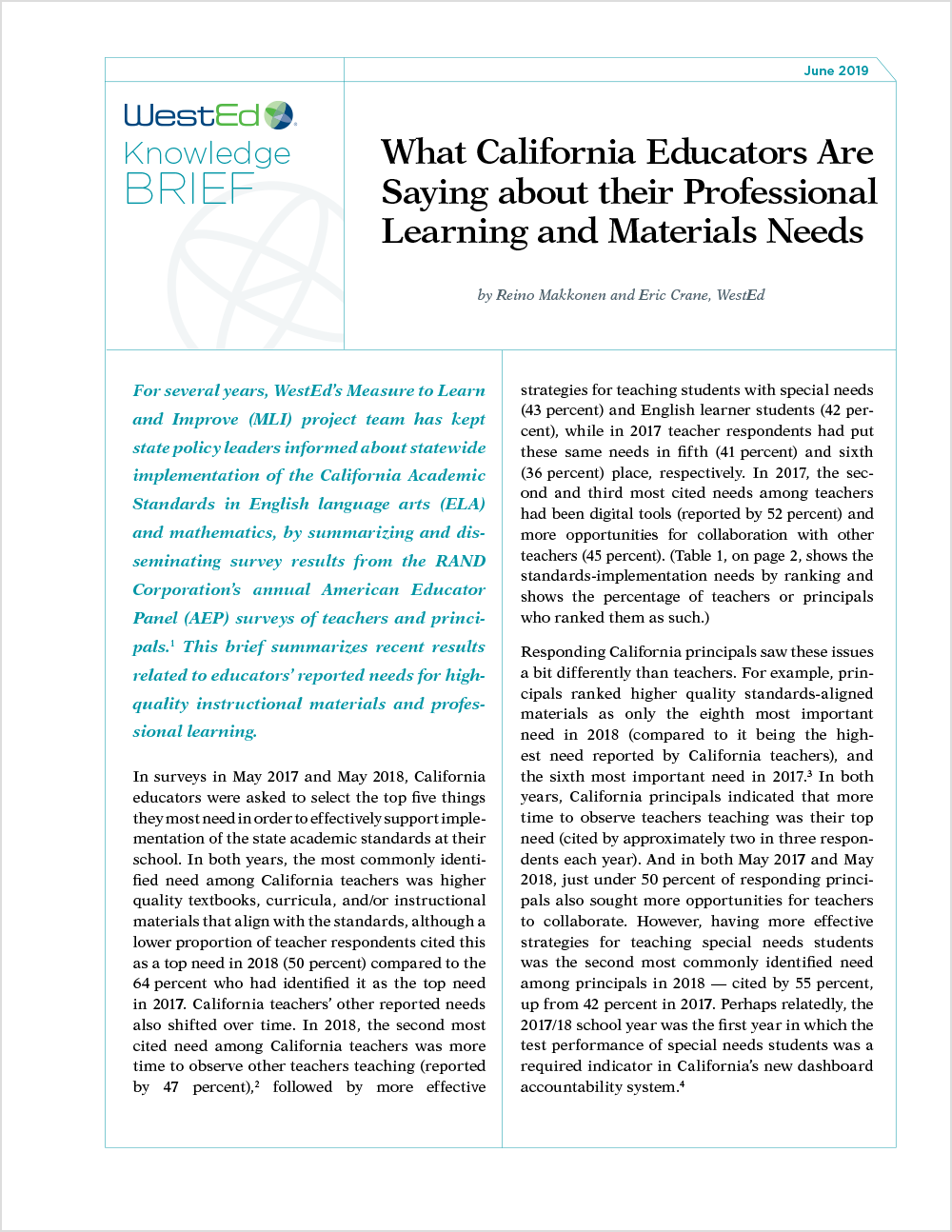Teacher Perspectives Are Key to Improving Professional Learning and Instructional Materials to Support Multilingual Learners
Posted on
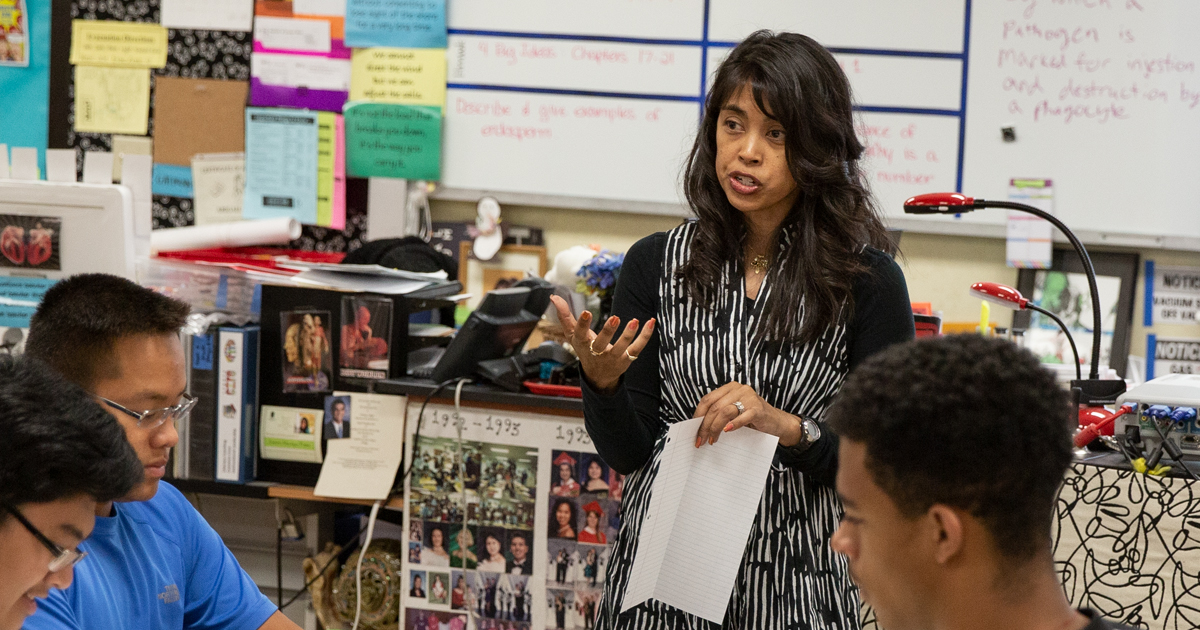
By Elizabeth Burr and Ryan Lewis
As a Senior Research Associate in WestEd’s Research-Practice Partnerships team, Elizabeth Burr works to promote asset-based services for multilingual learners that embrace their emerging bilingualism. Ryan Lewis is a Senior Research Associate on WestEd’s Assessment for Learning team. His expertise includes the impacts of programmatic, curricular, and policy interventions within K-12 settings, course placement and tracking policies, and issues related to multilingual students.
Nearly a fifth of California’s students are multilingual learners, a group that brings a wealth of linguistic and cultural assets to classrooms across the state. However, this group’s performance on the state’s English language arts and math tests lags behind that of students who were never multilingual students, a gap that widened during the COVID-19 pandemic.
While professional learning opportunities and curricular materials to help teachers meet the needs of multilingual learners exist, too often these supports take a one-size-fits-all approach.
Just as multilingual students are a diverse group with particular needs, teachers of multilingual students are also different from each other and vary in the types and amount of tailored supports they need for providing effective learning experiences for multilingual students.
These issues were the focus of a presentation at the California Educational Research Association (CERA) annual meeting on November 3, 2022. This post shares highlights from that session in which WestEd’s California Analysis for Learning and Engagement (CALE) researchers and partners discussed the varied needs and perceptions of teachers across the state from multiple, intersecting angles.
Maps Illustrate Concentrations of Particular Multilingual Student Groups Across the State
In the session, WestEd Senior Research Associate Ryan Lewis discussed the CALE team’s recent work on mapping demographic profiles of multilingual learners in California, illustrating where there are concentrations of student groups based on race/ethnicity and home language.
For example, Lewis displayed maps that show proportions in each California county of enrolled students in each of three different home language groups: Arabic (a native language of many countries, including Iraq and Syria), Persian/Pashto/Pushto (a native language/dialect in Afghanistan and other countries), and Ukrainian/Russian (spoken by students from Ukraine, Russia, and other countries).
Based on a collaboration with the California Department of Education (CDE), the maps were created to increase understanding of the varied landscapes of multilingual students in the state and to identify whether certain counties need additional support or may serve as exemplars of best practices in meeting the needs of specific multilingual student groups. The CDE is also using the maps to identify needs for targeted professional learning opportunities and materials for teachers.
Survey Data Show Differences in Teachers’ Perceptions of How Suitable Their Instructional Materials Are for Multilingual Students
CALE’s work has highlighted that California teachers vary in their subject-specific needs and have varying proportions of multilingual students in their classrooms. These differing contexts influence teachers’ perceptions of how appropriate the curricular materials provided to them are for their multilingual learners.
Knowing more about teachers’ varying perceptions can help education leaders better tailor professional learning opportunities that emphasize culturally responsive strategies and differentiated supports and help teachers use their subject-matter materials to advance their multilingual students’ learning. Teacher perceptions and needs can also inform the development of new and improved subject-matter materials.
WestEd Senior Research Associate Elizabeth Burr presented CALE’s 2022 research brief on how K–12 teachers’ perceptions of their instructional materials differ depending on various factors, including whether they have high or low proportions of multilingual students in their classrooms.
As with multilingual students, teachers are not a monolithic group; they vary in terms of their preparation, their experience, and what subjects they teach. Teachers also differ in how they utilize their materials, the value they place on certain characteristics of these materials, and their preferences for receiving and using guidance to support multilingual students.
The findings from the research that Burr presented suggest the need for more differentiated professional learning opportunities for teachers in specific contexts and subject areas. Additionally, California teachers need better instructional materials with embedded supports for multilingual students (e.g., scaffolded, grade-aligned content; guidance on how to integrate content learning goals with language learning goals).
Such materials can make learning accessible for a variety of students, promoting equity in terms of both content and differentiated supports for multilingual students who are at different points in their language learning and language proficiency. Developing and providing these supports is an area that teams from WestEd and CDE’s Multilingual Support Division are working to address.
Collaborations Can Help Address the Need for Culturally Inclusive Instruction
WestEd Research Associate Sandra Leu Bonanno presented on the collaborative work between WestEd and the developers of the Expository Reading and Writing Curriculum – English Language Development (ERWC-ELD), a subsidiary of the larger ERWC that provides culturally sustaining curriculum and coaching for educators using the California English Language Arts/English Language Development Framework. Bonanno described how the curriculum and coaching operationalizes the Framework by integrating language development alongside content learning.
Stories from teachers in Fresno echoed the survey findings that Burr had presented: Participating practitioners want better resources and materials, as well as concrete instructional guidance, to support multilingual learners in the classroom. Bonanno shared sample professional learning modules, lesson plans, and a video of multilingual students engaging collaboratively in a lesson.
CDE Is Investing in Guidance, Materials, and Professional Learning
Alesha Moreno-Ramirez, Director of CDE’s Multilingual Support Division, closed the session by describing ways that the state is providing guidance (e.g., English Learner Roadmap; California Practitioners’ Guide for Educating English Learners with Disabilities; Improving Education for Multilingual and English Learner Students: Research to Practice) and investing in instructional materials and professional learning for educators supporting multilingual students.
Moreno-Ramirez also invited education practitioners and researchers to become part of the decision-making around instructional materials by:
- providing public comment and piloting materials;
- serving as reviewers; and
- contributing to the implementation of rigorous, standards-aligned, and local board-adopted instructional materials that meet the needs of the state’s culturally and linguistically diverse population
This presentation and the work behind it embody CALE’s mission of being a needs-sensing, research-to-policy initiative and a knowledge hub for timely research, analysis, and insights concerning pressing California policy priorities. The presenters thank CERA for providing the space to present this work.
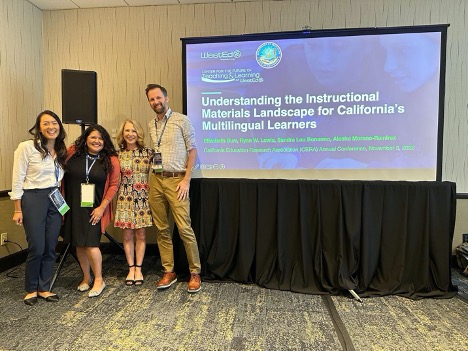 Presenters pictured from left to right: Bonanno, Moreno-Ramirez, Burr, Lewis
Presenters pictured from left to right: Bonanno, Moreno-Ramirez, Burr, Lewis
For further details or a copy of the session slides, email Elizabeth Burr at eburr@wested.org.

